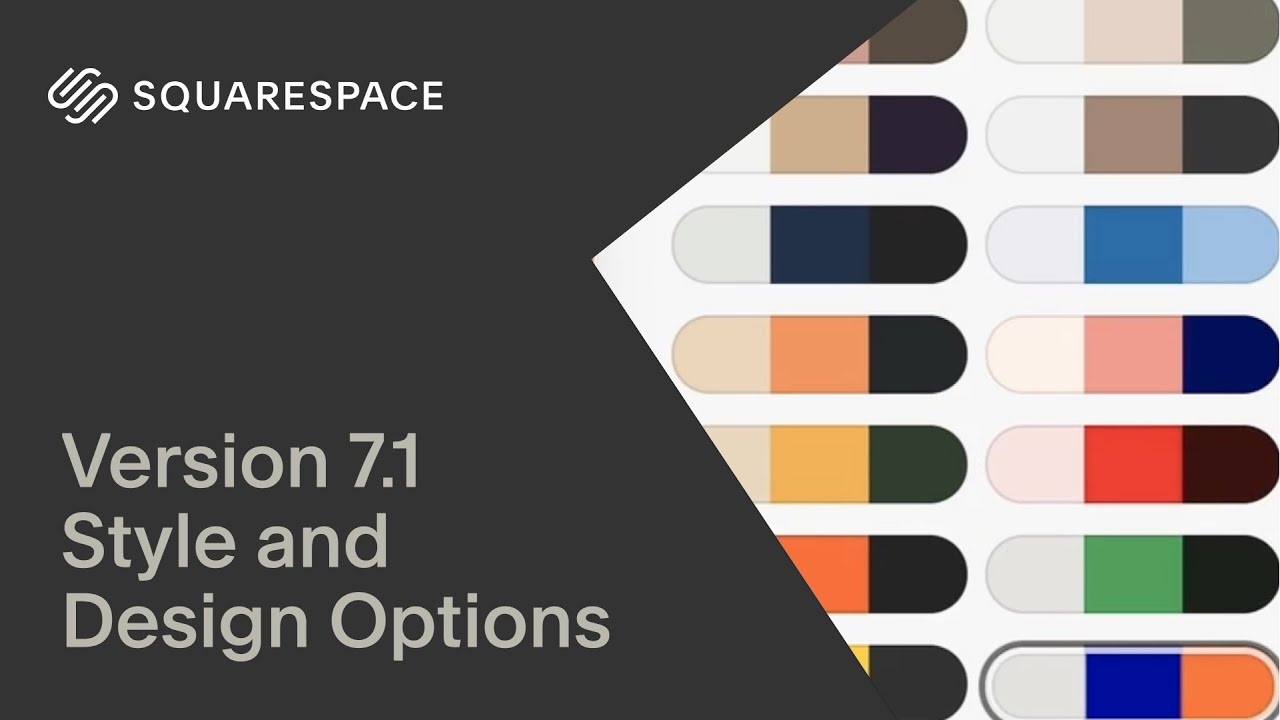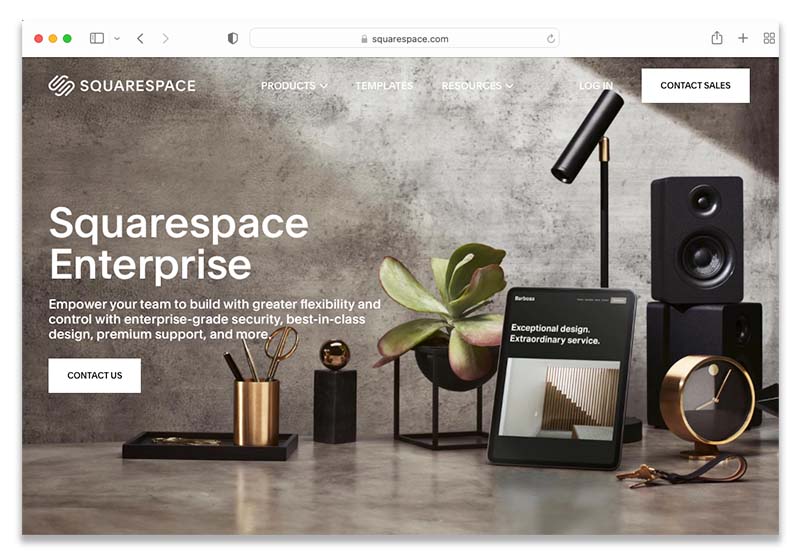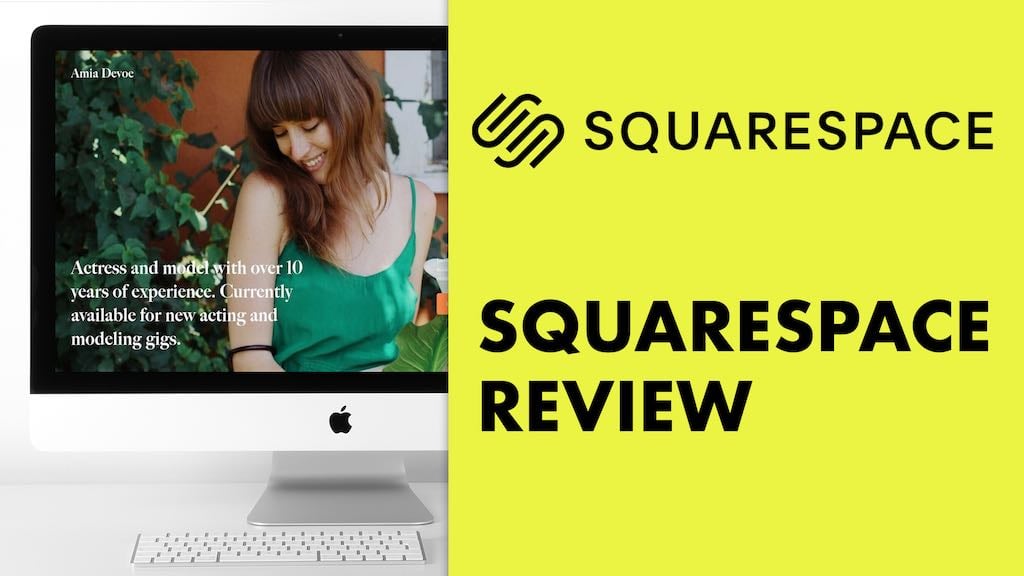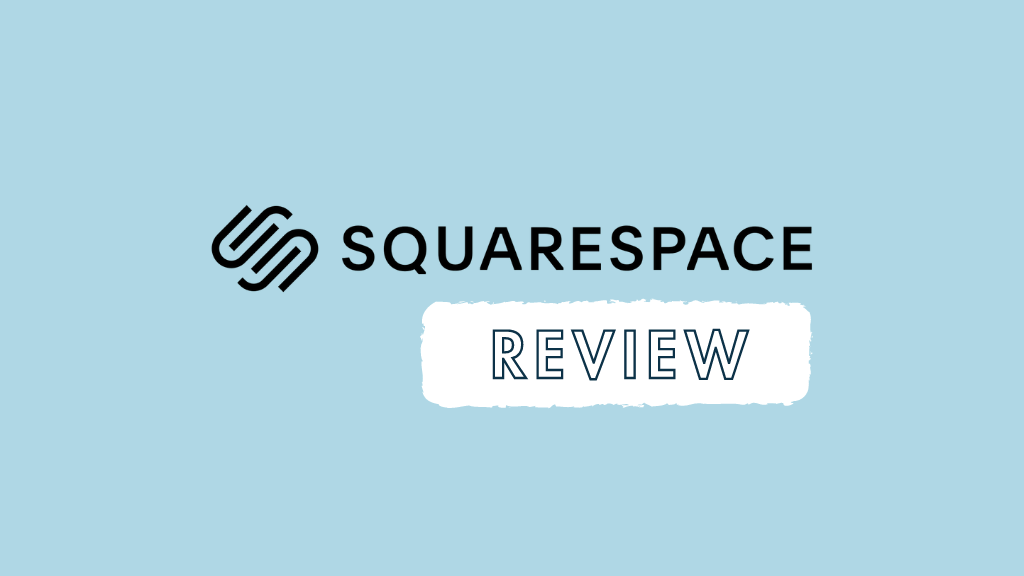- od idea of the best Squarespace plan for your project
- a list of the best alternative website builders.
By the end of the review, you’ll have a much clearer idea as to whether the platform is right for you, and what products to consider if not.
But first…
What is Squarespace? And how many people use it?
Squarespace is a website builder tool that is aimed mainly at small business owners and ‘solopreneurs.’
Created in 2004 as a solution to let people without web development skills build and maintain their own websites, Squarespace now powers millions of sites worldwide (over 2.9 million, according to Internet statistics company Builtwith.com).
Although it initially started life as a tool for building static, brochure-style websites, Squarespace has evolved over recent years into a platform that also offers built-in ecommerce and marketing features.

As you’ll see later on in this review, the platform can now be used to host an online store, run email marketing campaigns and even help you create video ads.
But how does Squarespace actually work?
How does Squarespace work?
Squarespace is a ‘hosted’ solution. This means that it runs on its own servers and you don’t have to pay for a hosting service or install software anywhere to use it.
The platform lets you create a website in a web browser without coding, and edit it easily thanks to a user-friendly content management system (CMS).

You pick a template, click on the bits of the design you want to change, and then adjust controllers in the style editor to do so.
For example, you can click on some text and apply a new typeface; click on a background and change its color; and so on (the video below gives you an idea of how this works).

But although Squarespace gives you a lot of control over your site’s design, it’s not necessarily a website builder that encourages its users to change things site too much — the idea is that you pick a template, make a few tweaks, add some content and hit the ‘publish site’ button.
This simplicity is a key part of Squarespace’s appeal.
But how much does the platform cost to use?
Squarespace plans and pricing
Like most website builders, you don’t ‘own’ a copy of Squarespace, but rather pay an ongoing fee to use it.
There are four Squarespace pricing plans available, all of which provide you with unlimited storage (meaning that you can add as much content as you like to your site) and unlimited bandwidth (meaning that there are no restrictions on site traffic levels).
The available plans are as follows:
-
Personal — $23 per month
-
Business — $33 per month
-
Basic Commerce — $36 per month
-
Advanced Commerce — $65 per month
This makes Squarespace slightly more expensive to get started with than some competing solutions (for example Wix or Shopify); but if you pay upfront for a year, discounts of 25% to 30% are applied to the above fees, depending on the plan.

Additionally, there’s an ‘Enterprise’ plan available. This gives you access to priority support and ‘white glove’ consultancy services to help you create and manage a website. Pricing for this is negotiable and based on your requirements.

And if you’d like to try Squarespace out before buying, a two-week trial is available, which you can access here.
In a hurry? Check out our Squarespace video review

Key differences between Squarespace plans
When it comes to the key differences between Squarespace pricing plans, some of the main things to look out for are:
- Ecommerce features — all Squarespace plans except the ‘Personal’ one let you sell online; as you go up the pricing ladder, the features for doing so become more sophisticated.
- Transaction fees – these are 0% on the Basic and Advanced ‘Commerce’ plans, and 3% on the ‘Business’ plan.
- Adding CSS and scripts — the ‘Personal’ plan doesn’t let you add CSS or JavaScript to your site, making it difficult to add bespoke design customizations or integrate third-party services.
- Contributors – the ‘Personal’ plan lets 2 people edit your site or add content to it; all the other plans let an unlimited number of contributors do so.
- Integrations — connections to certain third party apps and services like Opentable, ChowNow, Amazon and Mailchimp are only available on the ‘Business’ or higher plans.
- Video Studio – on the ‘Personal’ plan, you only get limited access to Squarespace’s new video-making app (a tool that aims to help you make videos that match the design and branding of your website).
- Marketing features – on the $33 per month ‘Business’ plan or higher you can use Squarespace’s promotional pop-ups and banners. These allow you to highlight particular offers on your website, or ask users to sign up to mailing lists. You can also add ‘mobile information bars’ on these plans (pictured below).
As you go through this review, you’ll learn more about all these features.

Getting a custom domain name from Squarespace
If you pay upfront for a year’s service, Squarespace gives you a free domain name (for one year).
This lets you avail of your own domain name — www.yoursite.com etc. — and connect it easily to your Squarespace site.
Remember however that by registering your domain via Squarespace, you are entrusting your website and your domain to one company — so, if you ever lost access to your Squarespace account, you’d lose access to both.
Accordingly, some users prefer to register their domain elsewhere.
Now that we’ve looked at some of the key differences between pricing plans, it’s time to take a look at a particularly important aspect of Squarespace: the visuals.
Squarespace review conclusion
Overall, Squarespace is an excellent option for individuals and small businesses in search of a platform to build their site or store with. Its templates and content management features are strong; its learning curve is gentle; and it’s an extremely reliable website builder.
It’s worth emphasising however that Squarespace is particularly good for two main applications: running a brochure website or hosting a portfolio site.
If you are an artist, photographer or a musician — or building a website for a one-off event like a wedding — you’ll find Squarespace to be a great choice of platform for building your site (and maintaining it in future). It’s also a very good choice for restaurant websites — photographs of meals and menu layouts can look fantastic in the context of a well-chosen Squarespace template.
Thanks to its easy-to-use ecommerce features, businesses needing a simple online store or shopping cart system may also find Squarespace a good solution — and because it’s a hosted solution, using Squarespace doesn’t require you to worry about things like server updates or security (other than taking the usual precautions around passwords). This brings a LOT of peace of mind to proceedings.
Squarespace does require some improvements to its ecommerce functionality however. Its lack of multi-currency selling features and limited point of sale functionality would probably nudge me in the direction of a more dedicated ecommerce platform like Shopify if I was working on a project for a corporate entity, or needed more advanced features for my online store.
GDPR is another one of my concerns — although you can make a Squarespace website GDPR compliant, it involves a bit more work than you might like.
The good thing is that — as with a lot of hosted solutions — you can try Squarespace out before committing to it. Accordingly, I’d strongly advise making the most of its free trial. Check every feature out thoroughly to ensure the platform meets your requirements.
So, I hope this Squarespace review has helped you make your mind up on the platform! Below you will find a summary of the key Squarespace pros and cons, and feel free to ask any questions you may have in the comments section below.

